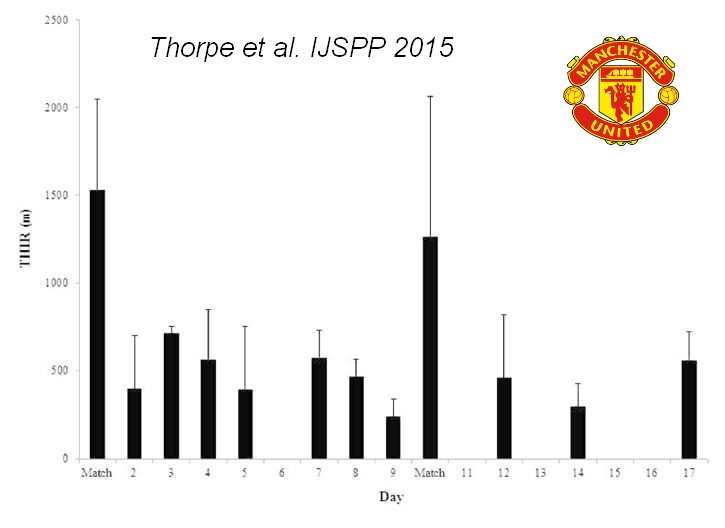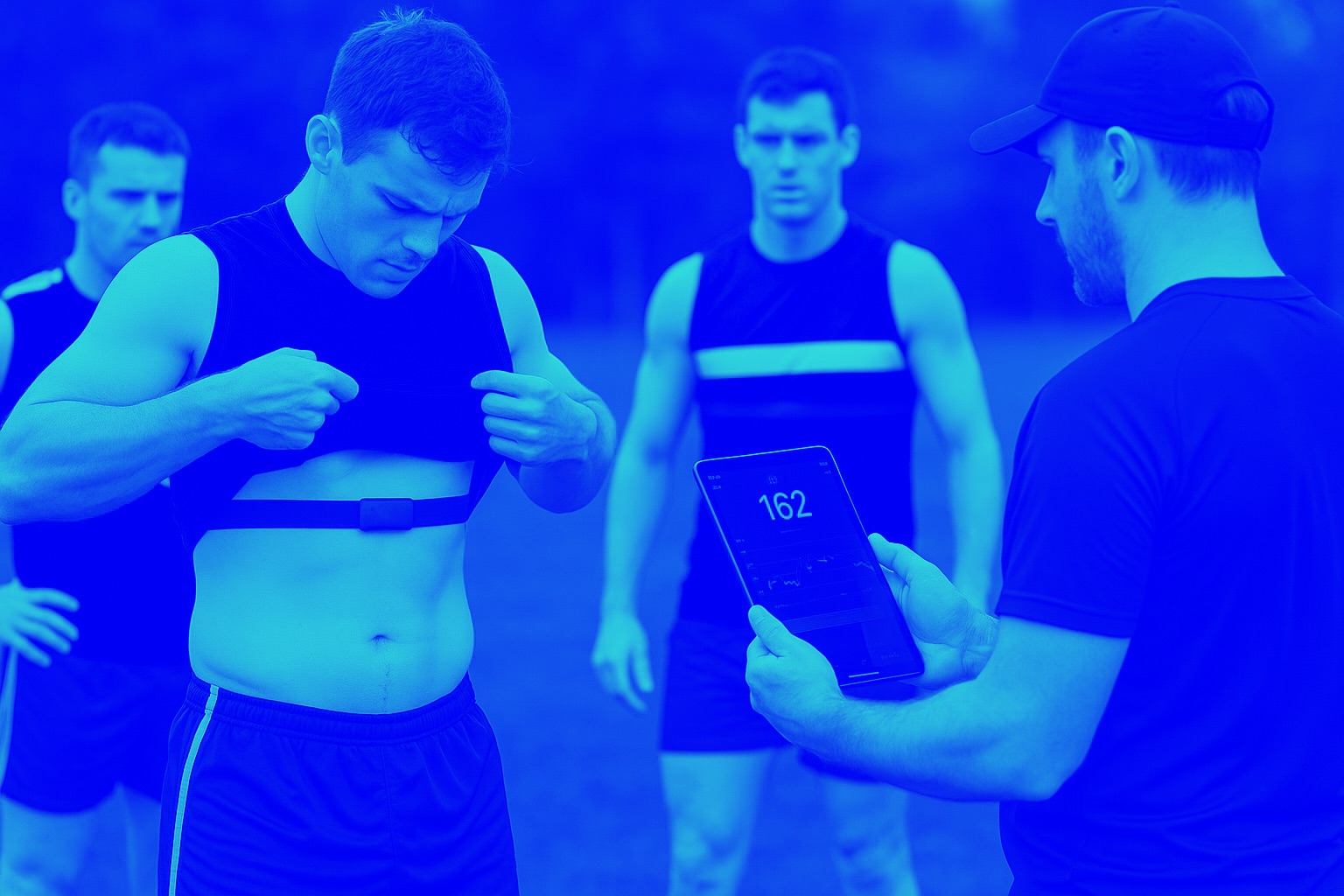Monitoring fatigue during the in-season competitive phase in elite soccer players
Thorpe RT, AJ. Strudwick, M. Buchheit, G. Atkinson, B. Drust, W. Gregson. Monitoring fatigue during the in-season competitive phase in elite soccer players. IJSPP 2015, In press.
 Figure 1. Mean (SD) total high-intensity (THIR, >14.4 km/h) distance (m), perceived ratings of fatigue (AU), countermovement jump (cm) and Ln rMSSD (ms) during the 17-day period
Figure 1. Mean (SD) total high-intensity (THIR, >14.4 km/h) distance (m), perceived ratings of fatigue (AU), countermovement jump (cm) and Ln rMSSD (ms) during the 17-day period
Purpose To quantify the relationship between daily training load and a range of potential measures of fatigue in elite soccer players during an in-season competitive phase (17-days).
Methods Total high-intensity running distance (THIR), perceived ratings of wellness (fatigue, muscle soreness, sleep quality), counter-movement jump height (CMJ), post
exercise heart rate recovery (HRR) and heart rate variability (Ln rMSSD) were analysed during an in-season competitive period (17 days). General linear models were used to evaluate the influence of daily fluctuation in THIR distance (>14.4 km/h) on potential fatigue variables.
Results Fluctuations in fatigue (r=-0.51; large; P<0.001), Ln rMSSD (r=-0.24; small; P=0.04), and CMJ (r=0.23; small; P=0.04) were significantly correlated with fluctuations in THIR distance. Correlations between variability in muscle soreness, sleep quality and HRR and THIR distance were negligible and not statistically significant.
Conclusions Perceived ratings of fatigue and heart rate variability were sensitive to daily fluctuations in THIR distance in a sample of elite soccer players. Therefore, these particular markers show particular promise as simple, non-invasive assessments of fatigue status in elite soccer players during a short in-season competitive phase.
Key Words Training load, Performance, Recovery, Wellness



